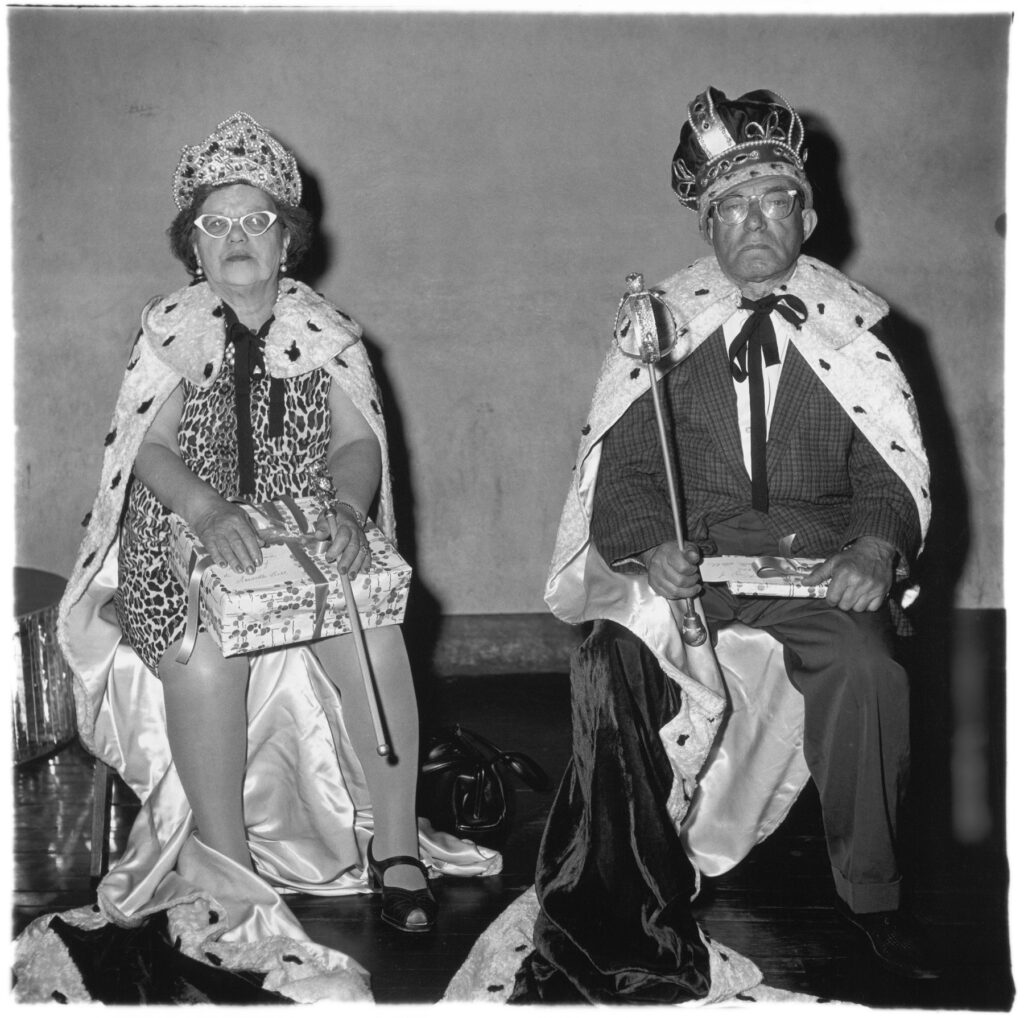‘What changed everything was the portfolio itself. It then seemed to me that any definition of art that did not include such a body of work was fatally flawed.' — Philip Leider, editor of Artforum.
In 1969, Diane Arbus put together a portfolio of ten of her photographs. She selected the images, made the prints, wrote the accompanying captions on vellum sheets, and worked with artist Marvin Israel on the case that ingeniously doubles as a frame. Arbus had planned the portfolio as an edition of fifty, but when she died in 1971, she had only printed the first eight sets, and had managed to sell only four. Photographer Richard Avedon purchased two, one for himself and the second for his friend Mike Nichols, while the others went to Jasper Johns and Harper's Bazaar art director Bea Feitler.
A Box of Ten Photographs is an incredibly intimate, artist-driven project. It encapsulates Arbus’s motivations and vision for her own work and the ways it connects with the viewer and the world. In May 1971, Artforum published a cover feature with five photographs from the portfolio, the first time photography had ever been included in the magazine. A year after Arbus’s death, the entire suite of photographs were exhibited in the American pavilion at the Venice Biennale. This was the first time that photographs had been shown there. Arbus’s portfolio radically shifted the idea of photography and elevated its status as an artform.
This exhibition displays one of the portfolios that were printed posthumously by Neil Selkirk, at the direction of the Arbus Estate, in accordance with the original specifications. This edition is on loan from the High Museum of Art in Atlanta, Georgia. It lets us see the ten photographs that Arbus selected to represent her practice, along with the expanded descriptions she provided for them. These photographs include the iconic Identical twins, Roselle, N.J 1966 (1966) and A young Brooklyn family going for a Sunday outing, N.Y.C. 1966. The exhibition celebrates the portfolio as a project that presents Arbus’s work on her own terms, and changed photography forever.
Arbus also plays a key part of the story of photography in Aotearoa New Zealand. In 1978-79, an exhibition of her work, curated by Doon Arbus and Marvin Israel toured to Auckland Art Gallery Toi o Tāmaki; The Waikato Art Gallery, Hamilton; the Govett-Brewster Art Gallery, New Plymouth; the Manawatu Art Gallery, Palmerston North; The Dowse Art Museum, Lower Hutt; The National Art Gallery, Wellington; The Sarjeant Gallery, Whanganui, and the Robert McDougall Gallery in Christchurch. This was the first monographic exhibition by an international contemporary photographer staged in this country. It drew record crowds, and had a substantial impact on photographers here. Arbus’s influence is equally strong today, and the portfolio operates as a model for the strong tradition of contemporary photobooks and other artist-driven projects that empower makers to take control over how their work enters and circulates in the world.
City Gallery Wellington Te Whare Toi would like to acknowledge the support of the Diane Arbus Estate; Fraenkel Gallery, San Francisco; The High Museum of Art, Atlanta, Georgia; and John Jacob, the McEvoy Family Curator for Photography at the Smithsonian American Art Museum, who developed this exhibition concept.





